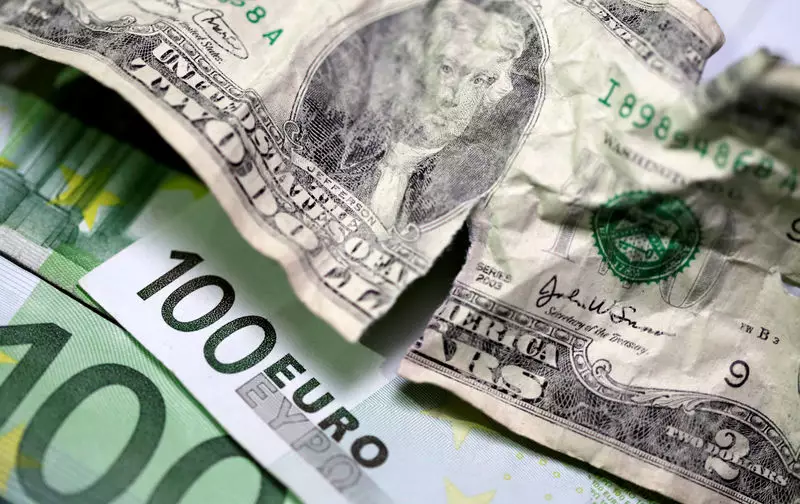Market Dynamics: The U.S. Dollar’s Resilience Amidst Mixed Economic Signals

The foreign exchange market experienced notable movements this week, particularly with the U.S. dollar showing signs of recovery after hitting a one-year low. Economic indicators and central bank policies from both sides of the Atlantic have contributed to this dynamic situation, prompting traders and analysts to reassess their strategies in response to evolving economic conditions.
Following a significant decline attributed to a substantial Federal Reserve interest rate cut, the U.S. dollar has managed to stabilize and even gain ground. As of early trading on Monday, the Dollar Index rose by 0.5%, reaching 100.925. This surge indicates a growing confidence among investors, partly fueled by expectations surrounding a soft landing for the U.S. economy, as presented by Federal Reserve Chair Jerome Powell.
The market has seemingly shifted from fears of an imminent recession toward a more optimistic outlook. Analysts at ING noted that instead of responding negatively to the Fed’s decision, equity markets have continued to rise. This change in sentiment underscores the complexities of market reactions to monetary policy adjustments. However, the undercurrents of uncertainty remain, as futures traders anticipate a series of additional rate cuts—75 basis points by year-end and up to 200 basis points by December 2025.
One of the crucial economic indicators this week is the core personal consumption expenditures (PCE) index, which serves as a barometer for inflation in the U.S. Scheduled for release on Friday, analysts foresee a monthly uptick of 0.2%. Such figures will play a pivotal role in determining the Federal Reserve’s future actions regarding interest rates. A weaker-than-expected core PCE reading could prompt further reductions in both U.S. rates and the dollar’s value, indicating that traders are on alert for this report.
The juxtaposition of strong equity market performance and potential rate cuts presents a unique scenario for investors, who must navigate the competing dynamics of growth and inflationary pressures.
Eurozone Challenges and Implications for the Euro
In stark contrast, the euro has faced headwinds, primarily due to disappointing economic data from Germany—the largest economy in Europe. The HCOB German flash composite Purchasing Managers’ Index fell to 47.2, marking a significant slowdown in business activity and reinforcing fears that Germany may be entering a recession. This data has put downward pressure on the EUR/USD pair, which dipped 0.5% to 1.1111.
The European Central Bank (ECB) has already implemented two rate cuts this year, and further economic weakness may necessitate more aggressive monetary policy actions. Analysts have cautioned that the current economic environment is not conducive for the euro to break through significant resistance levels, predicting that the EUR/USD currency pair may find itself trapped within a 1.11-1.12 range in the near term.
The British pound also experienced volatility, with GBP/USD dropping by 0.4% to 1.3264. After reaching its highest levels since March 2022, the currency may be showing signs of pullback as market enthusiasm wanes. The Bank of England’s recent decision to maintain a 5% interest rate adds another layer of complexity, as extreme long positioning in sterling begins to raise caution among traders.
Meanwhile, the yen’s performance has been affected by muted trading volumes due to a Japanese market holiday. The USD/JPY pair fell slightly to 143.72. The Bank of Japan’s recent commitment to holding interest rates steady—together with expectations of rising inflation—suggests a cautious but potentially pivotal moment for the yen.
The current landscape of global currencies showcases the interplay between economic indicators, central bank policies, and investor sentiment. While the U.S. dollar demonstrates resilience against widespread market concerns, the euro faces growing pressures amid faltering growth in Europe. The internal dynamics of currencies like the British pound and the yen further illustrate the complexity of the market as traders remain vigilant, monitoring economic releases that may dictate future movements. In this fluid environment, investors must harness a nuanced strategy to navigate the challenges and opportunities that arise from evolving economic landscapes.





